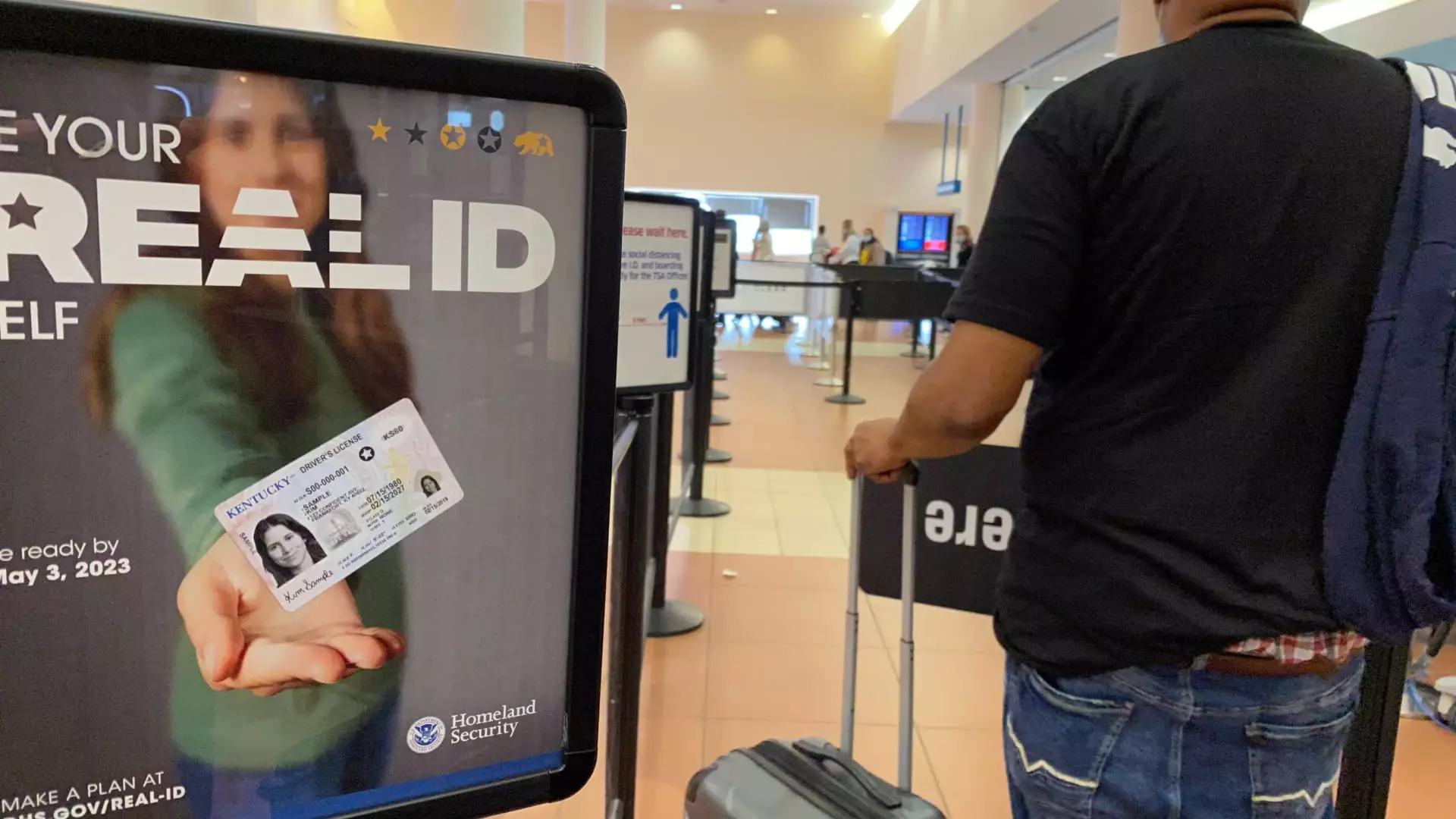As we gear up for the impending enforcement of the Real ID Act on May 7, one must ponder the consequences of such regulation on our domestic travel experience. The promise of enhanced security in the wake of 9/11 gave rise to the Real ID initiative, which aims to clamp down on the fraudulent use of identification. However, with chaotic scenes at airport checkpoints looming on the horizon, one can’t help but question the efficacy of over-regulation in alleviating genuine security concerns.
Statistics reveal that approximately 81% of travelers heading to airport security already possess a Real ID-compliant identification, but these figures do vary across different states. The projection of chaos seems to haunt the air travel experience, as the demand for these identifiers surges dramatically with April nearing its end. Are we witnessing a logistical nightmare in the making? It seems so.
State Preparedness Issues
Compounding the impending crisis is the lack of preparedness among state motor vehicle departments (DMVs). State officials and the TSA are urging travelers to secure their Real IDs as soon as possible; however, one has to question: can our outdated DMV systems handle this influx of appointments? A stagnating bureaucracy plagued by inefficiency raises concerns about how quickly individuals can obtain their Real IDs before the looming deadline.
For many, the existing system is fraught with long wait times and limited appointments, creating a frustrating environment where those who want to comply are left scrambling. It’s ironic and disheartening that innocent travelers now find themselves bearing the brunt of governmental inefficiency.
The Surprising Role of Technology
Interestingly, technology promises more than just the QR codes being handed out at LaGuardia Airport; it shines a light on an opportunity to modernize the identification process. In a post-pandemic world where remote services have become increasingly normalized, why is there no emphasis on a streamlined digital application for Real IDs? Airports and DMVs could benefit from an integrated, technology-forward approach, reducing physical lines and wait times while keeping travel secure and efficient. But the current setup feels stubbornly archaic, as if we are still operating within a pre-digital framework.
Moreover, the burden of disseminating information appears to have fallen heavily on airlines themselves. Frontier Airlines, for instance, has taken it upon itself to ensure that travelers are aware through various digital platforms. This situation underscores a glaring disparity—why should the onus of educating the public fall on the carriers, instead of the government bodies that instituted these regulations?
Impact on Travel Experience
When weighing the cost-benefit of the Real ID rule, one must contemplate how much time travelers will eventually spend at security checkpoints. How many of us enjoy spending hours waiting to board a flight? The TSA’s recommendation to arrive three hours early if you lack a Real ID is nothing short of disheartening. Are we moving towards a future where air travel feels less like a luxury and more like an unwelcome hassle?
An additional layer of stress comes from the assertion that failure to provide compliant identification could lead to delays or even denial of entry beyond security. The possibility of being turned away after hours of waiting could deter many from choosing air travel, thrusting the industry into further turmoil. It raises a crucial question: Is the heightened sense of security worth the potential distortion of travel accessibility and comfort?
A Questionable Legacy of Security
Ultimately, the Real ID may evoke fear and concern, reflecting a post-9/11 psyche that continues to haunt travelers and governmental policy alike. By creating stricter requirements for domestic flights, the initiative signals an ongoing struggle to balance security with individual freedoms. Yet, echoes of this initiative raise concerns about just how effective such measures truly are at guarding against modern threats. Are we protecting ourselves, or are we merely enshrining inconvenience in the guise of security?
With just days left until enforcement, a sense of urgency surrounds the labyrinthine path toward compliance with the Real ID Act, creating a bizarre paradox—one where security measures might ironically lead to increased chaos, frustration, and alienation among the very citizens they aim to protect. The impending deadline brings forth a kaleidoscope of concerns that signal deeper issues about how we perceive safety, efficiency, and individual rights in a post-pandemic world.


Leave a Reply